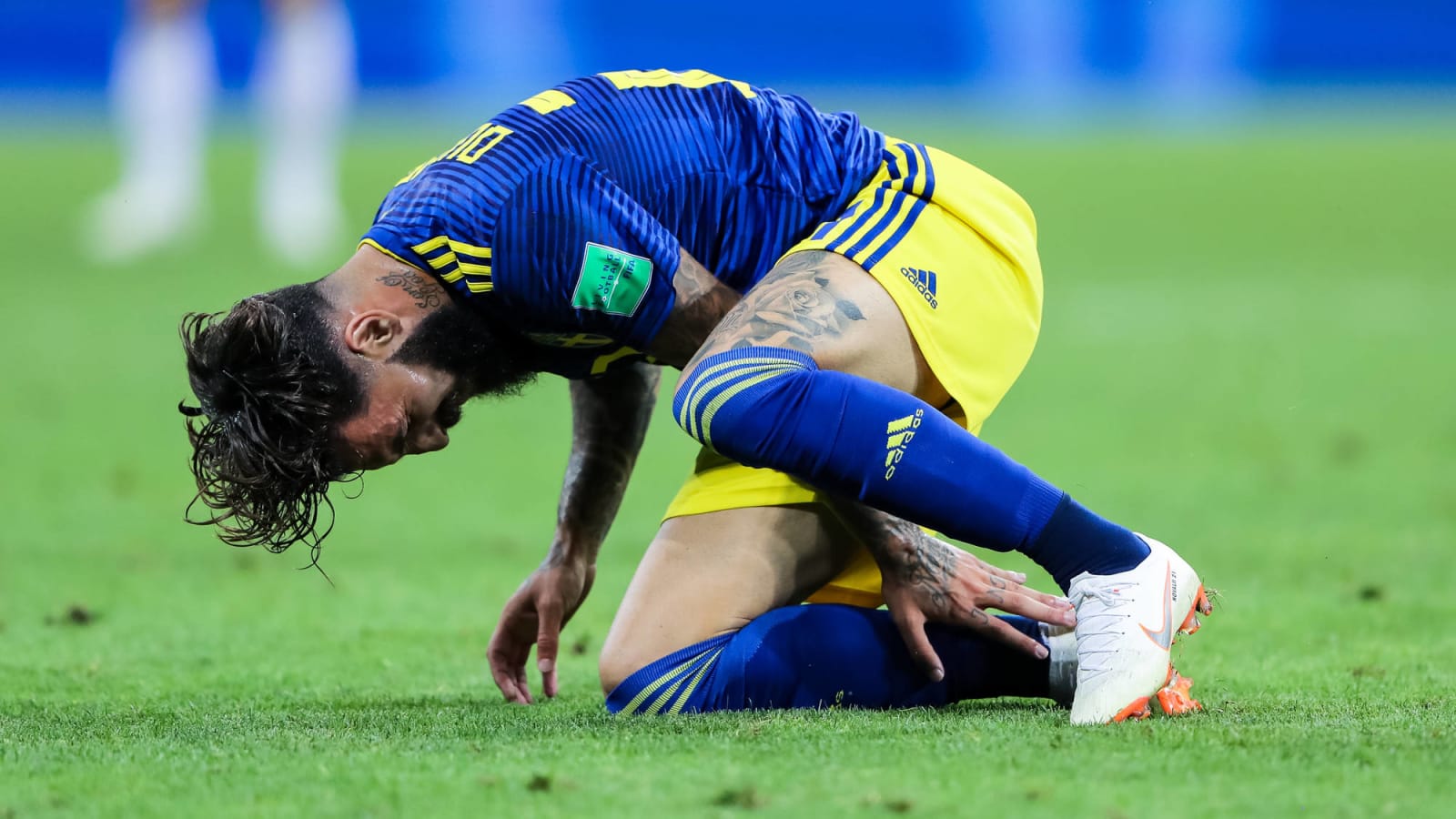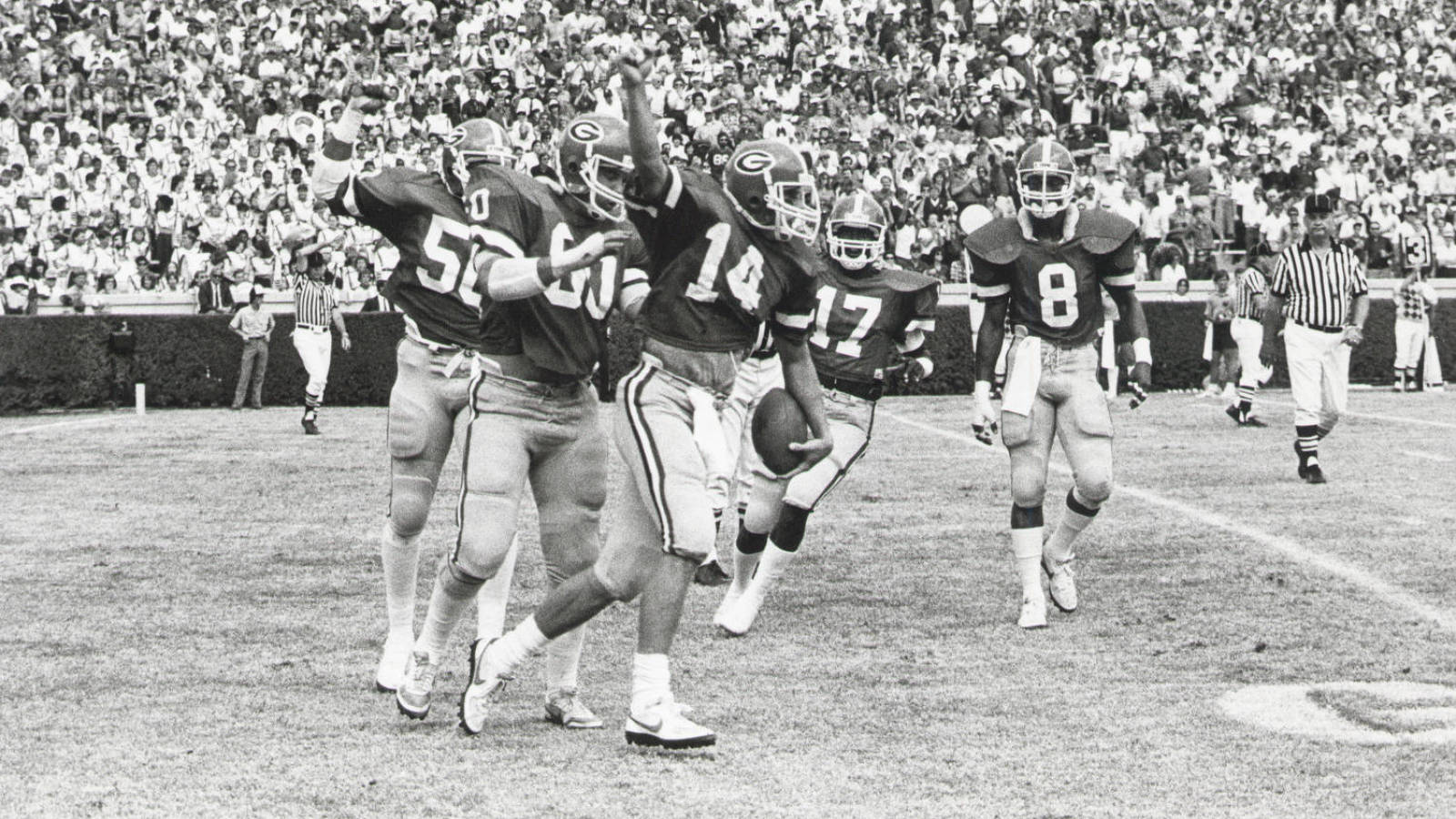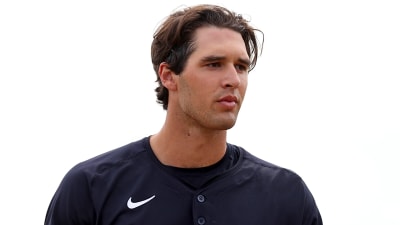
Sports & Politics Intersect: World Cup heading to dangerous play as racist incidents continue
"F--- racism." - The Swedish national team
"I am Swedish and I am proud to be wearing this shirt and our flag. We stand united. We are Sweden.” - Jimmy Durmaz, midfielder, Swedish national team
The group stage of the World Cup has concluded. On the field, the biggest storyline is Germany, the defending world champions, not making it to the next round for the first time since 1938. Off the field, it's been the prevalence of racism at the tournament.
Following his team's 2-1 loss to Germany last Saturday in which he committed the foul that resulted in the winning goal for Die Mannschaft, Swedish midfielder Jimmy Durmaz, who was born to Assyrian parents, claimed that he was on the receiving end of racist verbal abuse and that he and his family had received death threats.
"[To] be called ‘bloody darkie’ and ‘suicide killer,’ and for my family, my children, to have death threats ... that is completely unacceptable," Durmaz told the media, with his fellow Swedish teammates and coaches behind him offering support.
The animosity towards Durmaz appears to have disappeared after Sweden trounced Mexico, the most popular national team in America, 3-0. Despite their loss, the Mexican national team made it through to the round of 16 thanks to South Korea's shocking 2-0 victory over Germany. Two Telemundo television hosts celebrated El Tri's rescue by doing a racist slant-eyed gesture with their hands. Both personalities were suspended indefinitely shortly thereafter.
Elsewhere, Australian fans are claiming that they weren't being racist when they taunted Peru's Luis Advincula (he's Afro-Latino) when the two sides faced off, alleging that they were merely booing him and not simulating monkey sounds every time Advincula touched the ball.
But it wasn't just racism rearing its ugly head — homophobia and long standing political and historical tensions also made an appearance.
The Argentine soccer federation was fined after the fans of the Albicelestes resorted to violence and homophobic chants following their embarrassing 3-0 loss to Croatia. Diego Maradona, a living god in the South American country, didn't make things any better after flipping the bird to Nigerian fans. (Oh, and who could forget the time Maradona did the same racist gesture that got the two Telemundo hosts suspended?)
Elsewhere, Liverpool star Mo Salah is threatening to quit the Egyptian national team over the Chechnya debacle, and Switzerland's Granit Xhaka and Xherdan Shaqiri were fined for celebrating their goals over Serbia by doing a hand gesture that resembled the Albanian two-headed eagle — a nod to the tumultuous history between Albanians and Serbians. For their part, Serbians were reportedly more upset about the refereeing than the celebrations.
Locally, Hope Solo, one of the few U.S. athletes that can claim to be a World Cup winner, put the U.S. Soccer Federation on blast, claiming that they had helped turn the beautiful game into a "rich, white kid sport," and that the pay-to-play system is exclusionary of young athletes of color. It's worth pointing out that the U.S. men's national team has already pushed two U.S. born players to play for Mexico.
We are near the halfway point of the tournament and so much has happened already. Don't be surprised if next week you read yet another recap of what's been transpiring in Russia.
Need to know now:
Tigers pitching coach fired for alleged racial slur - Chris Bosio was fired by the Detroit Tigers for violating the team’s zero-tolerance policy when allegedly using the derogatory term "monkey" towards an African-American team employee. Bosio himself claims that he was not referring to the employee, but a rehabbing pitcher supposedly nicknamed "Spider Monkey" (according to sources and reported by Ken Rosenthal and Katie Strang at The Athletic, this was not the case), and plans to file a wrongful termination lawsuit.
MSU names controversial new general counsel - Michigan State University named former Michigan Supreme Court justice Robert Young as the school’s top legal counsel after he served as special counsel during the Larry Nassar investigation. It was not a decision without controversy, as the state’s attorney general believes that Young withheld critical information in the state’s investigation into Nassar. (An aside, Young is one of three Michigan judges on President Trump’s list of conservative-leaning candidates to potentially replace retiring U.S. Supreme Court Justice Anthony Kennedy.) Meanwhile, embattled interim school president John Engler foresees a tough battle with insurance companies over how to pay out the $500 million settlement with the Nassar victims. Separately, Aly Raisman spoke about how she has relived the trauma and aims to move forward, and late on Friday, Walker County, Texas officials announced new indictments against Nassar and trainer Debbie Van Horn for crimes committed at the famed “Karolyi Ranch” run by Bela and Martha Karolyi.
Winston suspension shows NFL’s inconsistencies… again - Tampa Bay Buccaneers quarterback Jameis Winston has been suspended by the NFL for groping a female Uber driver in 2016. The three-game ban was a negotiated one between the league and Winston, but while Winston issued a carefully worded apology for the incident, it highlights how the NFL continues to have a heavier hand for some problems and not others.
NFL fines outgoing Panthers owner - Carolina Panthers founder and outgoing owner Jerry Richardson was fined $2.75 million by the NFL after its investigation substantiated claims for workplace misconduct, which compelled the sale of the franchise.
Former Baylor AD alleges wide-ranging cover-up - In a recent deposition on a lawsuit filed by 10 different women, Ian McCaw, the former athletic director at Baylor, alleged that there was a “decades-long” cover-up of multiple sexual assaults by athletes, with court documents detailing how school officials, law enforcement and even PR officials were involved.
Former Texans cheerleader joins lawsuit - Angelina Rosa, who was a member of the Houston Texans cheerleading squad for two seasons, added her name to the ongoing lawsuit against the team, alleging mistreatment by the cheer director, among other harms.
Autopsy revealed brain trauma in college football QB - Tyler Hilinski, the Washington State quarterback who committed suicide in January, was found to have had extensive brain damage. His family continues to look for answers.
"The Big O" wants more white athletes to speak out - After being honored with the Lifetime Achievement Award at the NBA Awards, Oscar Robertson used his speech to challenge white athletes to speak out on social issues in the same way their black counterparts have.
Negro League landmarks in Kansas City being destroyed - In Kansas City, the first two floors and basement at the Buck O’Neil Education and Research Center were flooded by vandals. Weeks later, an arsonist set fire to the birth home of Satchel Paige. Investigators are looking into these incidents to find out who would intentionally damage these landmarks.
Willie O’Ree to enter hallowed hockey halls - One of the greatest ambassadors in all of sports, Willie O’Ree, will be enshrined in the Hockey Hall of Fame as a Builder. O’Ree was the first player of black descent to play in the NHL when he suited up for the Boston Bruins in 1957, and has worked for the league in its diversity outreach efforts for a number of years.
BIG3 becomes leader in the medical marijuana movement in sports - In an interview with CBS Sports, Al Harrington says the BIG3 is ready to “change the stigma” around marijuana as the league became the first pro league to allow for cannabidiol (CBD). League founder Ice Cube believes the move will force other sports to follow suit.
NBA leader in gender and racial diversity hirings in men’s sports - The Institute for Diversity and Ethics in Sports released its annual report on racial and gendering hiring in sports, where the NBA was once again lauded as a leader in both practices.
DOJ approves Disney bid for FOX assets - The Department of Justice gave the green light for Disney to merge a wide swath of 21st Century FOX, but with the caveat that "the Mouse" divest FOX’s regional sports networks due to monopoly concerns with ESPN.
This week in sports and politics history: The Supreme Court gives college sports television rights back to the schools

“My general observation is that you are going to see a lot more college football games on television in addition to the games carried on the national networks. They may be carried by individual local stations, by regional or even larger ad hoc networks and on cable television.” - J. Laurent Scharff, who represented the Association of Independent Television Stations in a friend-of-the-court brief
So many of the issues surrounding the NCAA and more than $1 billion in revenue that it brought in during the 2017 fiscal year can be traced back to a 1984 court ruling that stated that the NCAA violated Sherman and Clayton Antitrust Acts.
At the time, the NCAA had been in control of the rights to televising all football games, a practice that limited the number of times any given school could receive air time in a two-year span. Because of the NCAA’s control, individual schools could not negotiate their own television contracts lest they be removed from the NCAA.
ABC and CBS paid a $131.7 million each for the rights to broadcast 35 college football games per season. Major schools like Oklahoma and Georgia would receive $600,000 for a national telecast, money that they would have to share with their conference.
Instead of continuing to comply with the NCAA’s terms, Oklahoma and Georgia decided to sue the NCAA, believing that schools would be able to bring in more revenue to through their football programs to help fund other athletic programs if they were allowed to pursue their own television deals. Major programs were receiving less in fees rights than what they would on the open market; smaller programs were receiving more.
The courts ruled in favor of Oklahoma and Georgia, 7-2, and we’re still seeing the effects of the ruling today. There isn’t anything governing how college football television deals are made today. Most major conferences have their own networks through major players like ESPN and FOX Sports, but huge schools like Texas have networks all on their own, creating a ridiculous competitive advantage.
SEC schools were making more than $17 million per year back in 2010, and in 2017, the Big 10 signed a huge deal that would pay the conference a combined $440M per year from Fox Sports, ESPN and CBS — and that is expected to grow as the years pass. All of this money is going to those who need it the least, of course. The Big 10 had five of the top 14 paid coaches in college football at the time. None of the money, naturally, is going to the athletes.
While it was a monumental ruling at the time that prevented the NCAA from exploiting the schools, it just led to exploitation in other areas and increased corruption because of the amount of money at stake in any given season.
More must-reads:
- Review: 'Red Card: How the U.S. Blew the Whistle on the World’s Biggest Sports Scandal' shows FIFA's biggest drama is off the field
- Serena Williams’ team upset with ‘invasive and targeted’ drug tests
- The 'Most recent cycle by MLB franchise' quiz
Breaking News
Trending News
Customize Your Newsletter
 +
+
Get the latest news and rumors, customized to your favorite sports and teams. Emailed daily. Always free!








